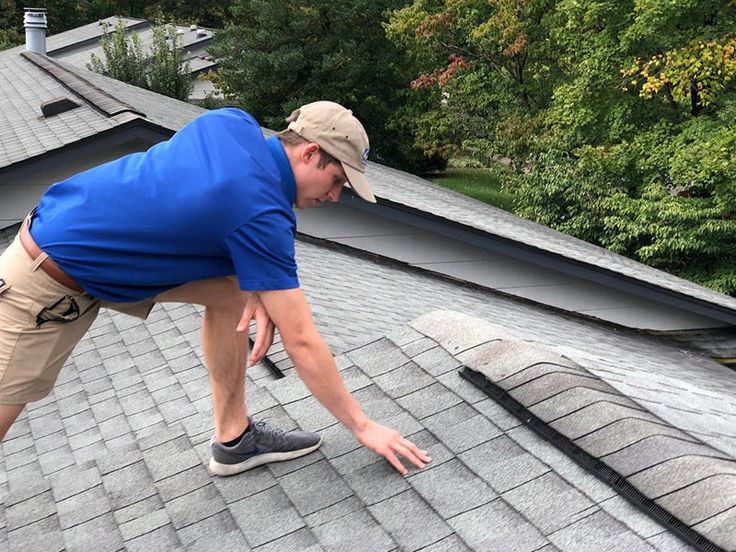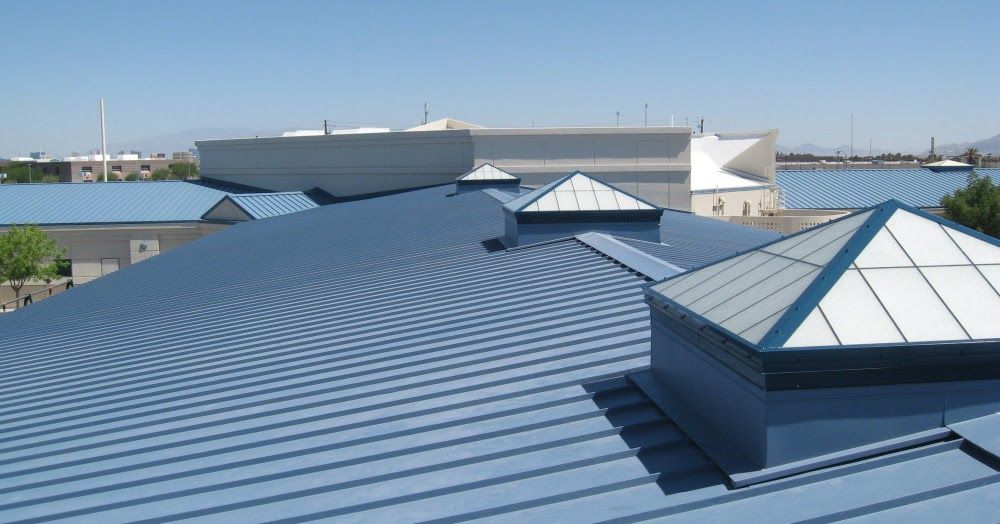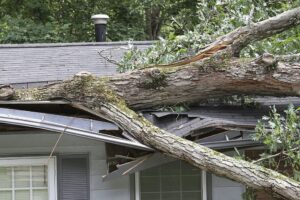The roof of your commercial building plays a critical role in protecting your property, employees, and assets from the elements. It is your building’s first line of defense against weather, and any problems with it can quickly escalate into significant, costly repairs or even structural damage. Identifying signs of roof issues early on can save you time, money, and prevent major disruptions to your business.
This article will outline five key signs that your commercial roof needs immediate attention, so you can take action before minor problems turn into major headaches.
1. Visible Leaks or Water Stains
One of the most obvious signs that your commercial roof needs attention is the presence of leaks or water stains. Water infiltration is a serious issue that can lead to damage not only to your roof but also to the structure, insulation, electrical systems, and even interior finishes.

Common Warning Signs of Water Damage:
- Ceiling Stains: If you notice brown or yellow stains on your ceilings or walls, this is a strong indicator that water is seeping through your roof.
- Dripping Water: Any visible water dripping from the ceiling or pooling on the floor during or after rain is a clear sign of a roof problem.
- Wet Insulation: If your building’s insulation is wet, it means water is penetrating the roof and could lead to mold, mildew, and reduced energy efficiency.
Ignoring water damage can lead to extensive structural problems, including rot, weakened framing, and mold growth. If you notice any signs of water infiltration, it’s time to call a roofing professional immediately to assess the situation and perform necessary repairs.
2. Ponding Water on the Roof Surface
Flat or low-slope commercial roofs are prone to ponding, where water accumulates and does not drain properly after rain or snow. While many commercial roofs are designed to handle some water pooling, prolonged ponding can cause severe issues, including accelerated wear and leaks.
Why Ponding Water Is a Concern:
- Roof Damage: Standing water can slowly deteriorate roofing materials, especially if the roof is not designed to withstand constant exposure to moisture.
- Increased Weight: Excess water adds weight to the roof, putting additional stress on the building’s structure. Over time, this can lead to sagging or even collapse if not addressed.
- Vegetation Growth: Stagnant water encourages the growth of algae, moss, and other vegetation, which can further damage the roof surface and block drainage systems.
Ponding water is a sign that your roof’s drainage system may not be functioning correctly. Regular maintenance and inspections are crucial to ensuring that water does not collect and damage your roof.
3. Cracked, Blistered, or Damaged Roofing Materials
Your commercial roof is exposed to extreme weather conditions throughout the year, which can cause wear and tear on roofing materials over time. Whether your roof is made of asphalt, metal, or single-ply membrane, damage to the roofing materials is a clear indicator that repairs are needed.

Common Types of Roofing Material Damage:
- Cracks and Blisters: Extreme heat, cold, and moisture can cause roofing materials to expand and contract, leading to cracks and blisters. These weak spots allow water to penetrate the roof and cause internal damage.
- Tears in Membrane Roofing: Single-ply membrane roofing systems (such as TPO or EPDM) are susceptible to tears, punctures, and seams coming apart. This can lead to water infiltration and undermine the roof’s integrity.
- Metal Roof Corrosion: If you have a metal roof, rust or corrosion is a serious concern, as it weakens the metal and can lead to leaks and structural problems.
If your roof shows any signs of material damage, immediate repairs are essential to prevent further deterioration. A roofing contractor can assess the condition of the materials and recommend whether repairs or a full replacement is necessary.
4. Sagging or Uneven Roof Surface
A sagging or uneven roof is a major warning sign that your roof’s structural integrity is compromised. This issue is often caused by excess weight from accumulated water, snow, or ice, but it can also result from poor construction or aging materials.

Causes of Roof Sagging:
- Water Pooling: As mentioned earlier, ponding water adds extra weight to the roof. If left unchecked, it can cause the roof to sag and create further drainage problems.
- Structural Damage: The roof’s decking or framing may have become weakened due to rot, moisture, or age, causing the roof to sag.
- Excessive Snow Load: In colder climates, heavy snow accumulation can add a significant load to the roof, causing it to buckle under the pressure.
A sagging roof is not just an aesthetic issue—it poses a serious risk to your building’s safety. If you notice any areas of your roof dipping or sagging, contact a roofing professional immediately to assess the damage and determine whether repairs or replacement is needed.
5. Increased Energy Costs
A less obvious, but equally important, sign that your commercial roof may need attention is a sudden increase in energy costs. If your roof’s insulation is compromised, it will no longer provide the thermal protection your building needs to maintain a consistent indoor temperature. This leads to higher heating and cooling costs as your HVAC system has to work harder to compensate for the loss of insulation.
How a Damaged Roof Affects Energy Efficiency:
- Heat Loss: During the winter, a poorly insulated roof will allow heat to escape, forcing your heating system to work harder and raising your energy bills.
- Heat Gain: In the summer, a damaged or inadequately insulated roof will let heat into the building, causing your cooling system to run more frequently.
- Wet Insulation: Water infiltration can soak the insulation under the roof, reducing its effectiveness and causing long-term damage.
If your energy bills are higher than usual, and you’ve ruled out other causes, it’s time to inspect your roof. Upgrading or repairing your roof’s insulation can make a significant difference in your energy consumption and reduce overall operational costs.
What to Do When You Notice These Signs
It’s essential to address any of these warning signs as soon as they appear. Ignoring roofing issues can lead to more severe damage and higher repair costs down the road. Here are the steps you should take if you notice problems with your commercial roof:
1. Schedule a Professional Roof Inspection
The first step is to schedule a professional roof inspection. A licensed roofing contractor will be able to identify the root cause of the problem and recommend the appropriate solution, whether it’s a simple repair, roof restoration, or a full replacement.
2. Address Immediate Repairs
If your roof has visible damage or leaks, address these issues immediately to prevent further deterioration. Temporary solutions, such as patching leaks or clearing ponding water, can buy you time while you plan for more extensive repairs or replacement.
3. Plan for Long-Term Maintenance
After addressing any urgent repairs, work with your roofing contractor to develop a long-term maintenance plan. Regular inspections, cleaning, and minor repairs can help extend the life of your commercial roof and prevent costly emergency repairs in the future.
Conclusion: Don’t Wait to Take Action
Your commercial roof is a critical component of your building’s overall infrastructure, and neglecting it can have serious consequences for your business. By paying attention to the warning signs—such as leaks, ponding water, material damage, sagging, and increased energy costs—you can address issues early on and avoid more extensive (and expensive) repairs.
At Atlas Roofing & Restoration, we specialize in commercial roofing services, from inspections and repairs to complete roof replacements. Our experienced team can help you identify problems with your roof and recommend the best course of action to protect your property and ensure the longevity of your roof. If you notice any of the warning signs discussed in this article, contact Atlas Roofing & Restoration today for a professional consultation and inspection.




